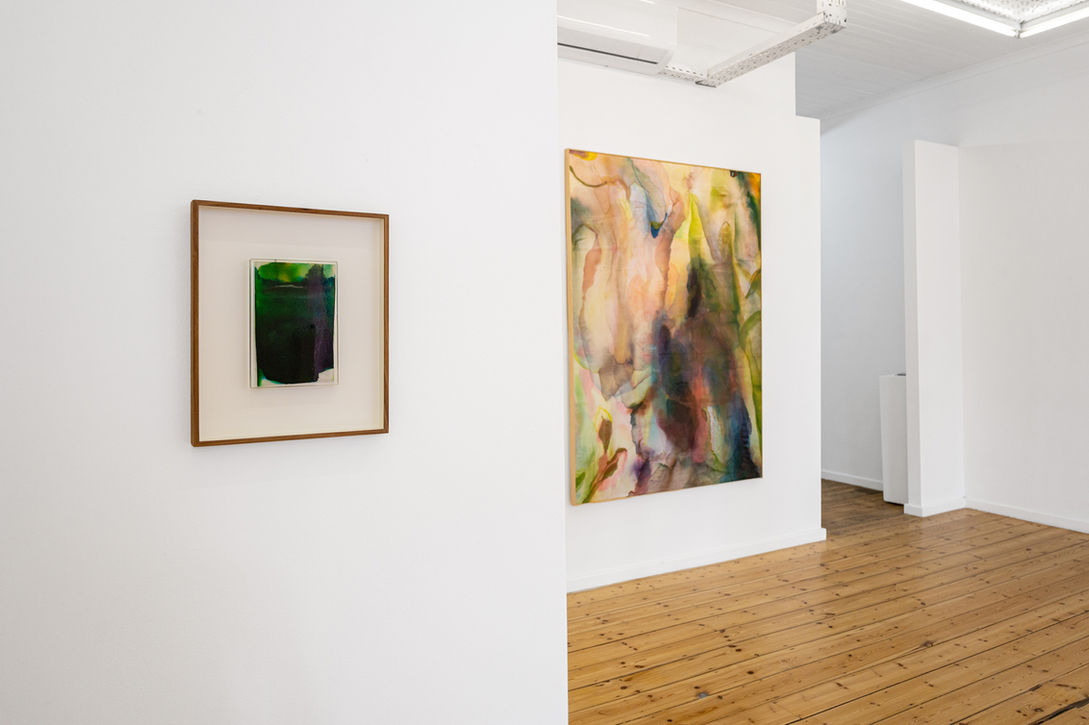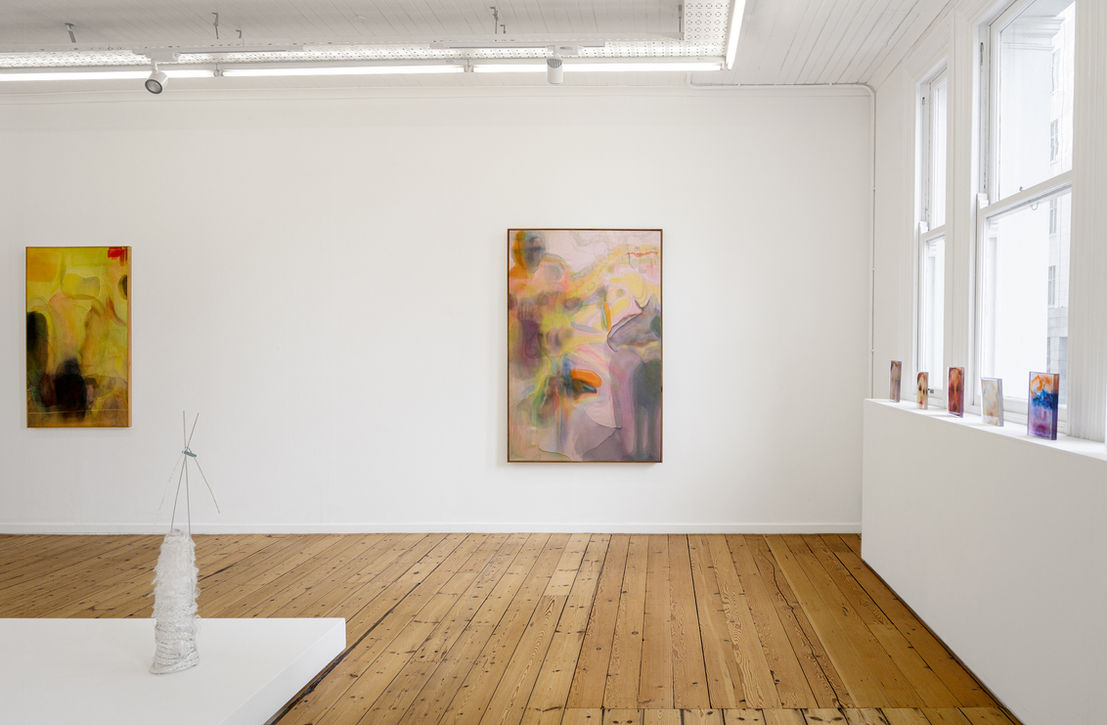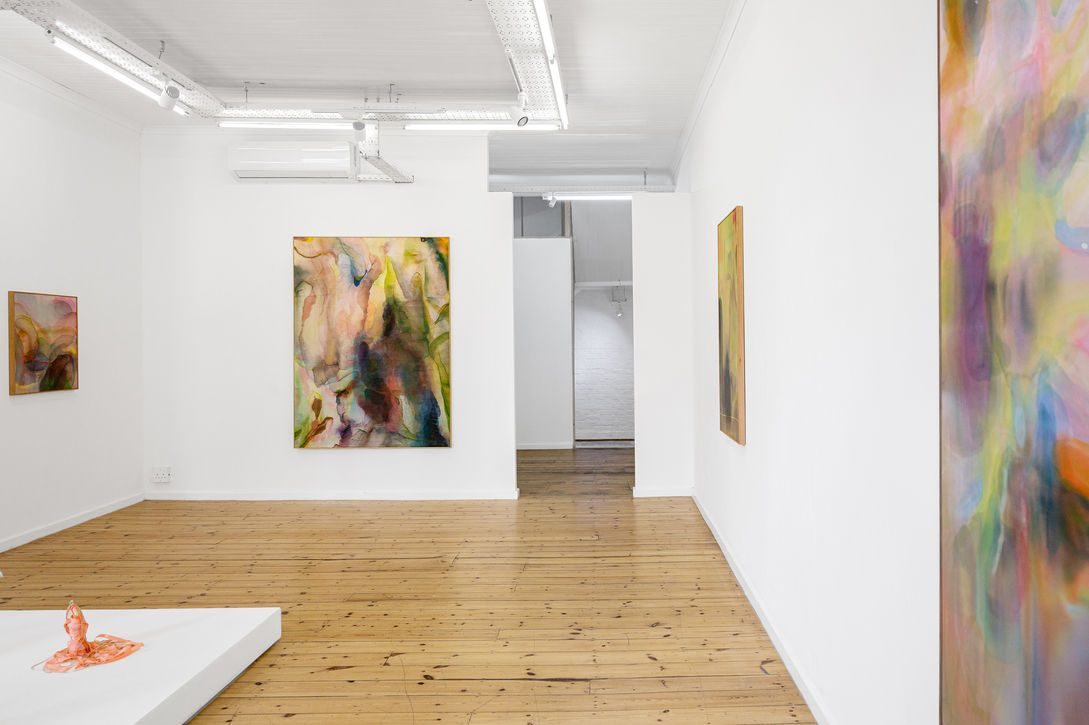XANTHE SCOUT
Artist Room | XANTHE SCOUT
SMAC Cape Town
10. 05. 25
Funny-weird or funny-ha-ha?
Xanthe Scout Lardner-Burke’s exhibition of new paintings, resin works and sculpture all slip away from answering the question. Lardner-Burke’s work is, in her own words, ‘primarily concerned with accidents and precarity’; things that break in mid air, splinter in your hands - a joke with a mumbled punchline, a crucial misunderstanding. Though the paintings in this exhibition take the same starting point and follow roughly the same route, they arrive at vastly different conclusions - take wrong turns, miss some critical piece of information, double back on themselves.
In her essay Iridescence, Intimacies, Tavi Meraud says that the ‘surface is only a surface…insofar as we encounter it.’ To look at these works is to suspend our disbelief, to swoon into the surface’s glittering, to look beneath the sparkle and tell ourselves we can identify the subject of the painting. Lardner-Burke’s surfaces are seductive; they beguile, glimmer and wink, are shiny and iridescent, catch the light. Beginning with stretched polyester satin, paint and pigment is applied in washes, spills and great slicks of liquid until something emerges. Colours are allowed to mix for a bit and are then kept carefully separate. New to these works is the presence of shadowy figure-shapes. ‘If you’re trying to find a person you won’t,’ she says, ‘But if you’re open to the possibility…’
In previous paintings there has always been this sense of a world behind the work, and the big paintings are like portals which allude to the events offscreen in a more sideways way. The titles do this too - like overhearing snatches of someone else’s conversation. Shards of speech. Taken together you get the sense of a universe happening just beyond your line of sight. Small works encased in resin are like preserved make-up wipes, lipstick and mascara coming off in one big sweep. Others appear as dream-landscapes: green skies, trees with burning branches. They are like supporting actors or corroborating statements. ‘Often, because I am not looking at anything in-reference when working - nothing specifically real or pre-founded - it’s easy to see things you know in the painting,’ Lardner-Burke says. ‘It is easy to find shapes and colours that recall other shapes and colours convoluted in memory.’
If the paintings are portals to somewhere else, the sculptures are like models or facsimiles; elaborate and fantastical constructions, Borgesian in their logic, their almost baroque intricacies belie their cobbled-together-ness. They have a very borrowed vernacular, of maquettes, mock-ups and half-hearted DIY - but you wouldn’t know, because, like stage-sets and theatre props, they let you suspend your disbelief. Acting as bigger sculptures, with bigger gestures and grander conclusions, they come right up close to a conclusion and fumble their delivery. They are charming (and frustrating) when they miss; are klutzes, butterfingers, adorably clumsy; they cue you in and beckon you onstage to join them. Their use of this language of performance allows them to go somewhere else entirely. The trick is to watch them closely while they do it.
Lardner-Burke’s work has always been interested in humour. Previously, this slapstick sensibility informed her palate - brights on brights, obvious neons - and spoke broadly to a universe of figures cavorting in some kind of joke - or trick? - landscape, winking at us lavishly and beating us over the head with the conclusion to a joke. But things have shifted. A muddiness has crept in. When colour becomes contaminated like this, it starts to hint at narratives and sequences. The spill, which has always been a part of Lardner-Burke’s work, has started to stain, and mark the too-cheerful colours. It will not be cleaned up.
‘Just as much as iridescence scintillatingly seduces, this shine is also its cunning.’ Meraud goes on to say. The works in this exhibition have an intelligence and an interior logic. Like iridescence, they too offer a ‘rehearsal of the problem’ between two things (funny-weird, funny-ha-ha), and become the place where the distinction between these two things is suspended. Maybe these works are like practices for the real world - scratch nights, improv, rehearsals. The images that float in them are fragile. If you look too closely they disintegrate. But if your gaze hits them at the right angle, and the light lines up, you could see the whole story.
References:
Tavi Meraud, Iridescence, Intimacies, in e-flux Journal #61, January 2015.











